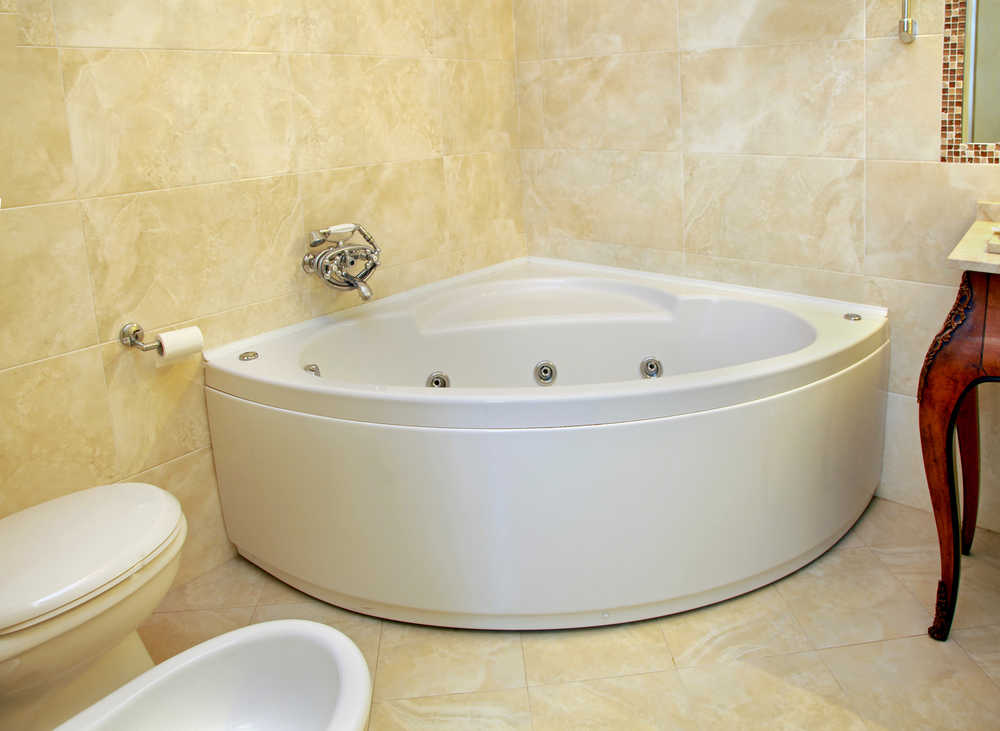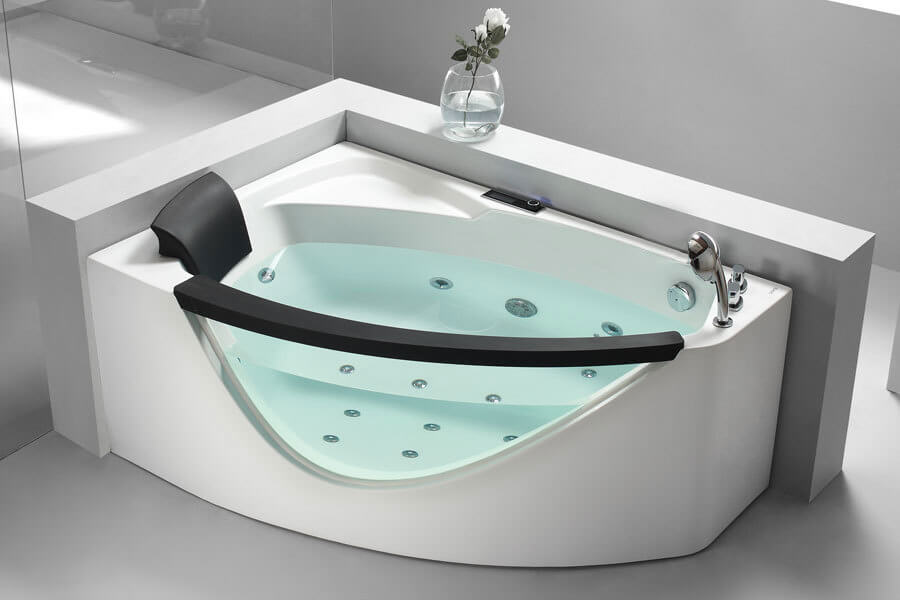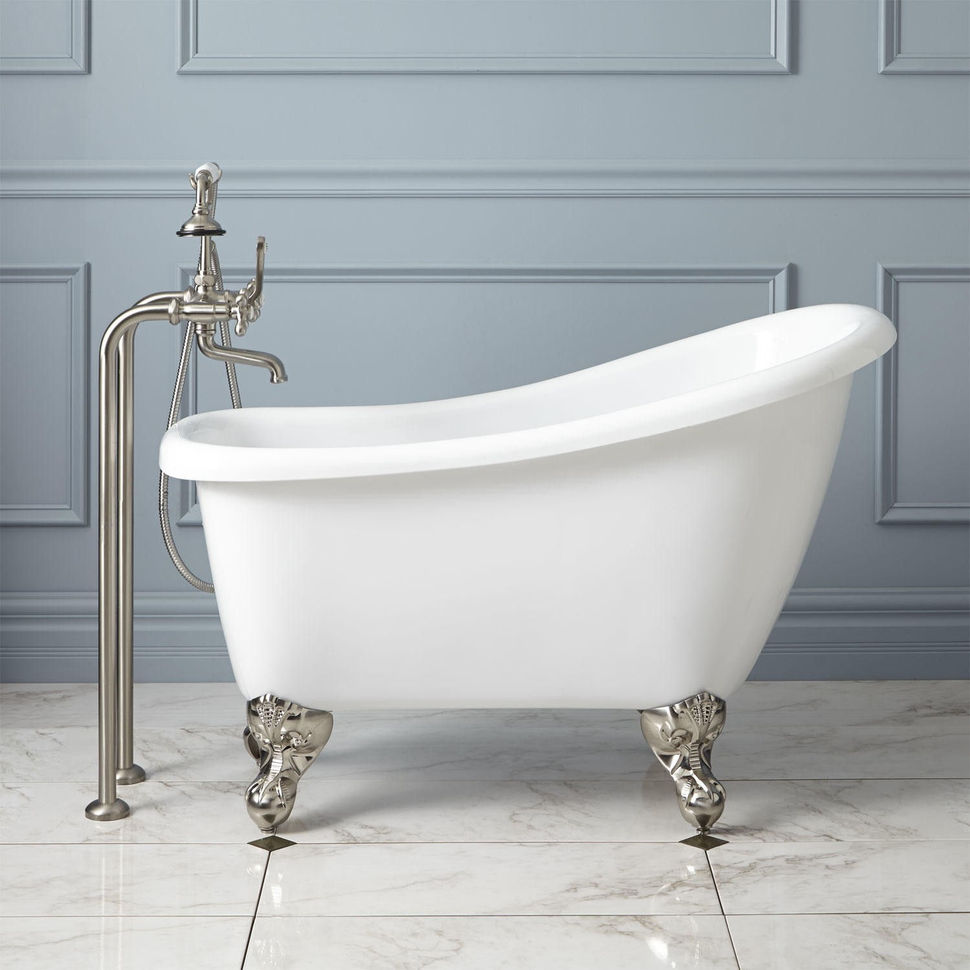Small Tub Options for Small Bathrooms

Choosing the right bathtub for a small bathroom can be a challenge, but with careful planning, you can find a tub that fits comfortably and adds a touch of luxury. Small tubs are designed to maximize space while providing a relaxing soaking experience.
Types of Small Tubs
Different types of small tubs cater to various bathroom layouts and preferences. Here are some popular options:
Alcove Tubs
Alcove tubs are the most common type of tub. They are designed to fit into a recessed alcove, typically between two walls. They are easy to install and offer a classic look.
Corner Tubs
Corner tubs are perfect for maximizing space in small bathrooms. They fit snugly into a corner, creating a cozy and efficient layout. They are available in various shapes and sizes, allowing for customization.
Freestanding Tubs
Freestanding tubs are a stylish and modern option. They stand alone in the room, adding a focal point to the bathroom. They are typically larger than alcove or corner tubs and require more space.
Pros and Cons of Small Tub Types
| Tub Type | Dimensions | Features | Price Range |
|---|---|---|---|
| Alcove Tub | Typically 55-60 inches long, 30-32 inches wide | Easy installation, classic look, affordable | $500 – $2,000 |
| Corner Tub | Vary depending on shape and size, typically 55-60 inches long, 30-32 inches wide | Space-saving, various shapes and sizes, modern look | $700 – $3,000 |
| Freestanding Tub | Typically 60-72 inches long, 30-36 inches wide | Stylish, modern, focal point of the bathroom | $1,500 – $5,000 |
Maximizing Space with Small Tubs: Small Tubs For Small Bathrooms

A small tub can be a luxurious addition to a small bathroom, providing a relaxing escape without sacrificing precious space. The key is to design the space strategically, maximizing functionality and creating the illusion of more space.
Placement Strategies and Furniture Choices
The placement of a small tub can significantly impact the overall feel of a small bathroom. To create a sense of openness and flow, consider placing the tub in a corner, against a wall, or even in a freestanding configuration. A corner placement, for example, maximizes space and allows for a more intimate bathing experience. Freestanding tubs, on the other hand, can add a touch of elegance and create a focal point in the room.
When choosing furniture, opt for compact pieces that complement the size of the tub. A narrow vanity with a floating countertop can maximize floor space and create a sense of airiness. A wall-mounted toilet can further enhance the sense of spaciousness. A small storage shelf or cabinet placed near the tub can provide a convenient spot for toiletries and bath essentials.
Using Mirrors, Light Fixtures, and Color Schemes
Mirrors are essential for creating the illusion of more space in a small bathroom. A large mirror placed above the tub can reflect light and visually enlarge the space. Consider using multiple mirrors, such as a small mirror above the vanity and a larger one above the tub, to enhance the effect.
Light fixtures can also play a crucial role in maximizing space. Bright, overhead lighting can make a small bathroom feel more spacious and welcoming. Consider using recessed lighting or pendant lights to create a more dramatic effect. Soft, ambient lighting can also enhance the relaxing atmosphere of the bathroom.
Color schemes can also contribute to the illusion of more space. Light, neutral colors, such as white, cream, or pale gray, can make a small bathroom feel larger. Avoid using dark or bold colors, as they can make the space feel smaller and more enclosed. A single accent color, such as a bright blue or green, can add a touch of personality without overwhelming the space.
Small Bathroom Design Examples
-
Example 1: A small bathroom with a corner tub, a floating vanity, and a wall-mounted toilet. The walls are painted a light gray, and the floor is tiled with white marble. A large mirror above the tub reflects light and creates the illusion of more space. A small window above the tub allows natural light to filter into the room, adding to the airy feel.
A corner tub maximizes space and allows for a more intimate bathing experience.
-
Example 2: A small bathroom with a freestanding tub, a narrow vanity with a floating countertop, and a small storage shelf. The walls are painted a light blue, and the floor is tiled with white subway tiles. A large window above the tub allows natural light to flood the room, creating a bright and welcoming atmosphere. The freestanding tub adds a touch of elegance and creates a focal point in the room.
A freestanding tub adds a touch of elegance and creates a focal point in the room.
Small Tub Accessories and Considerations

Choosing the right accessories for your small tub can significantly enhance its functionality and aesthetics. From showerheads to faucets and tub surrounds, these elements play a crucial role in maximizing space and creating a luxurious bathing experience.
Showerheads and Faucets
The choice of showerhead and faucet can significantly impact the functionality and aesthetic appeal of your small tub. Consider these factors:
- Showerhead Type: A handheld showerhead offers flexibility, allowing you to direct the water flow for rinsing and showering. A rain showerhead creates a spa-like experience, while a combination showerhead provides both options.
- Faucet Style: A single-handle faucet is space-saving and easy to operate. A two-handle faucet offers more control over water temperature and flow.
- Water Pressure: Ensure the showerhead and faucet are compatible with your water pressure. A low-flow showerhead can conserve water and still provide a satisfying shower experience.
Tub Surrounds
Tub surrounds play a vital role in creating a cohesive and visually appealing bathroom design. They also help to protect the walls and floor from water damage.
- Material Options: Common materials for tub surrounds include tile, acrylic, fiberglass, and stone. Tile offers versatility in design and durability, while acrylic is budget-friendly and easy to maintain. Fiberglass is also cost-effective and requires minimal maintenance. Stone adds a touch of luxury but requires careful sealing to prevent water damage.
- Design Considerations: Choose a tub surround that complements the style of your bathroom. For a modern bathroom, consider sleek, minimalist designs. For a traditional bathroom, opt for classic, ornate designs.
- Space Optimization: In a small bathroom, consider a tub surround that seamlessly blends with the walls to create a sense of spaciousness. A seamless transition between the tub and surround minimizes visual clutter and maximizes the perceived space.
Maintaining and Cleaning Small Tubs, Small tubs for small bathrooms
Regular maintenance and cleaning are essential for preserving the beauty and functionality of your small tub.
- Regular Cleaning: Clean your tub after each use with a mild detergent and warm water. Use a soft cloth or sponge to avoid scratching the surface.
- Hard Water Deposits: Hard water can leave mineral deposits on the tub surface. Use a commercial hard water cleaner or a mixture of vinegar and baking soda to remove these deposits.
- Caulking: Inspect the caulking around the tub regularly and re-caulk as needed to prevent water damage.
- Grout Cleaning: If your tub surround is tiled, clean the grout regularly to prevent mold and mildew growth.
Small tubs for small bathrooms – Small tubs are a great option for maximizing space in smaller bathrooms, but they can sometimes feel chilly. To combat this, consider adding a heated bathroom floor, which can make a huge difference in comfort. If you’re interested in exploring ways to heat your bathroom floor, check out this helpful guide: how to heat your bathroom floor.
Once you have a warm floor, even a small tub can feel luxurious and inviting.
Small tubs can be a great way to maximize space in a small bathroom, especially when paired with a compact vanity. A small rustic bathroom vanity can add a touch of charm and warmth to the space, while still leaving room for a cozy soaking tub.
The key is to choose pieces that are both functional and visually appealing, creating a bathroom that feels both spacious and inviting.